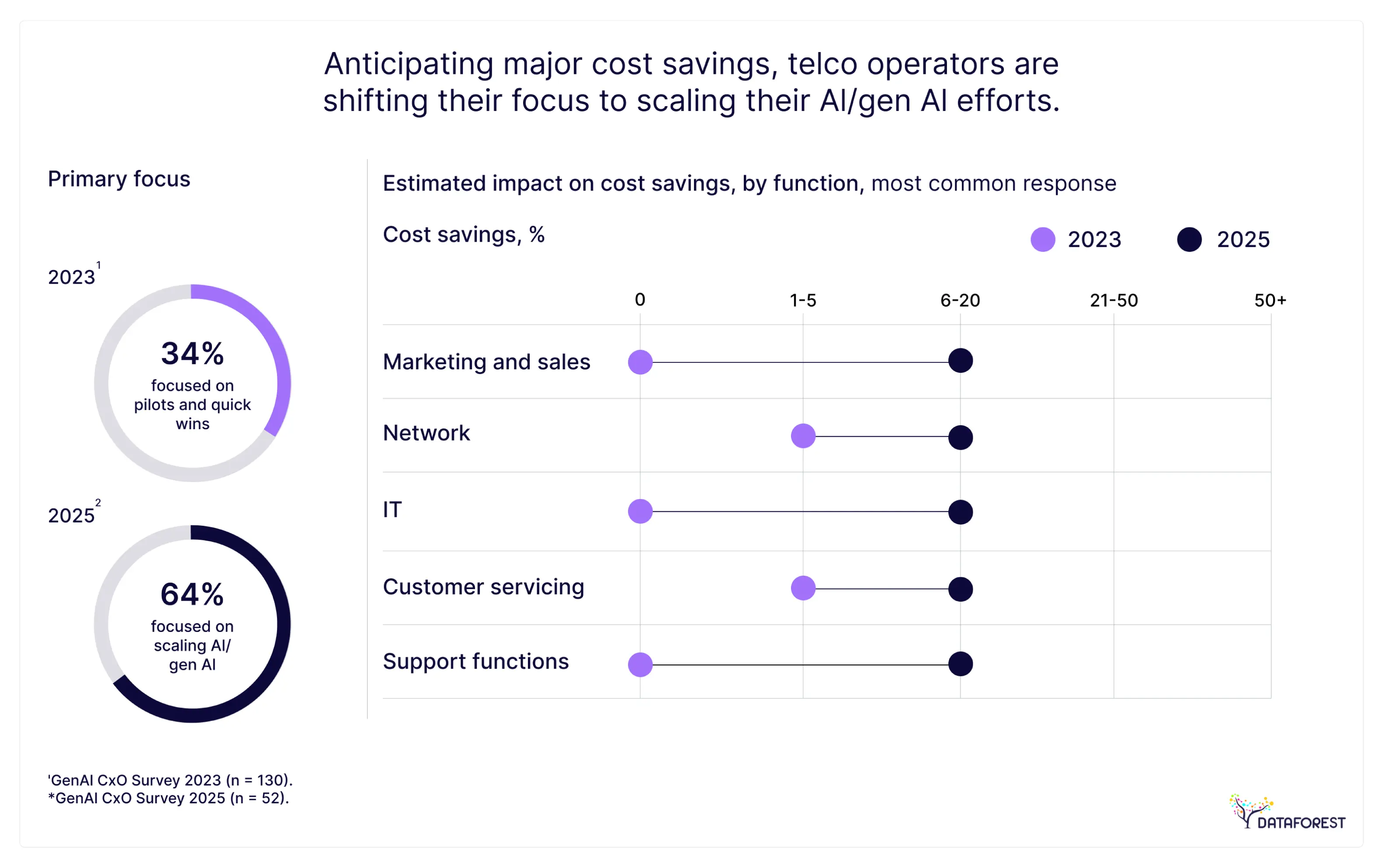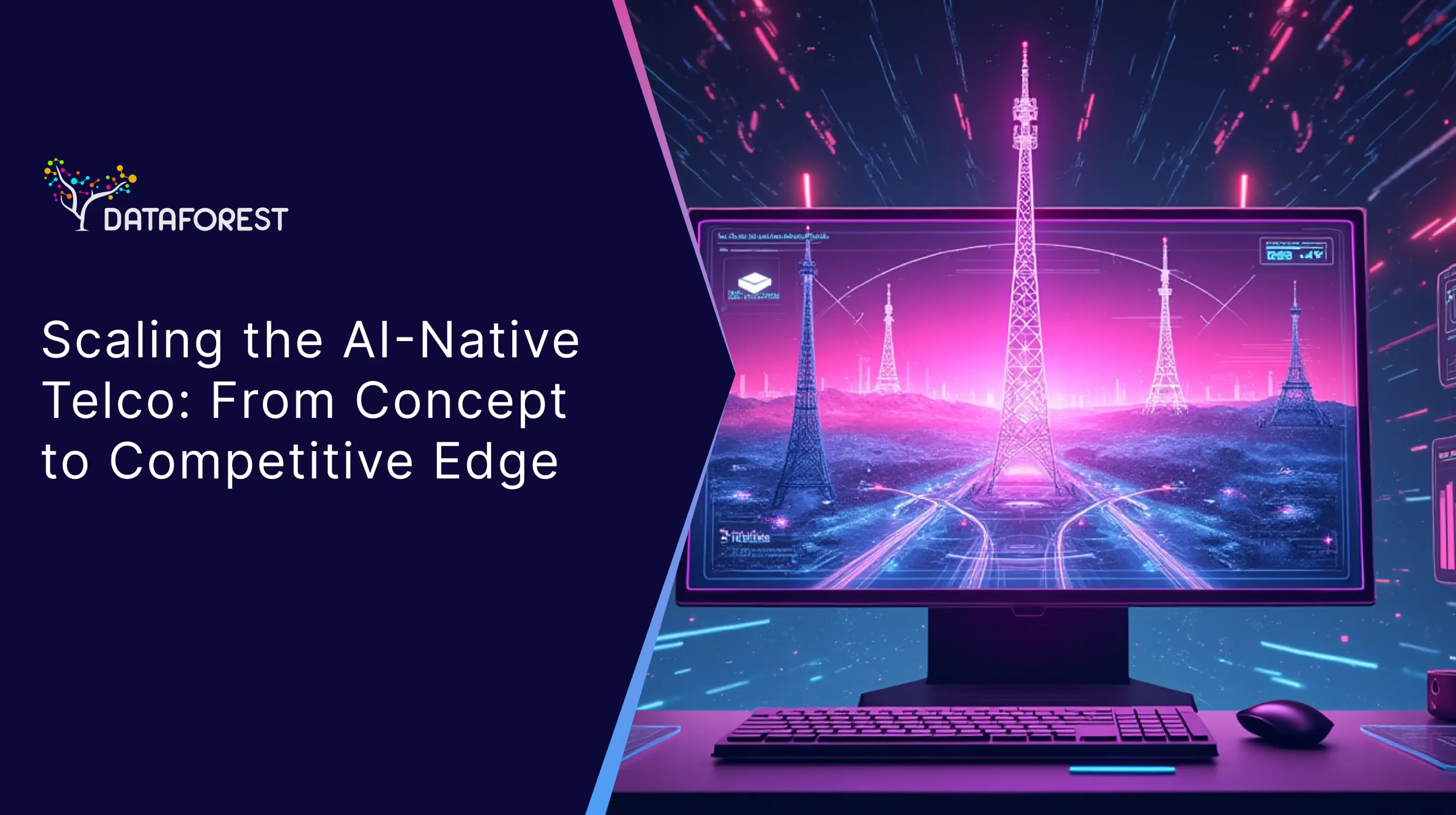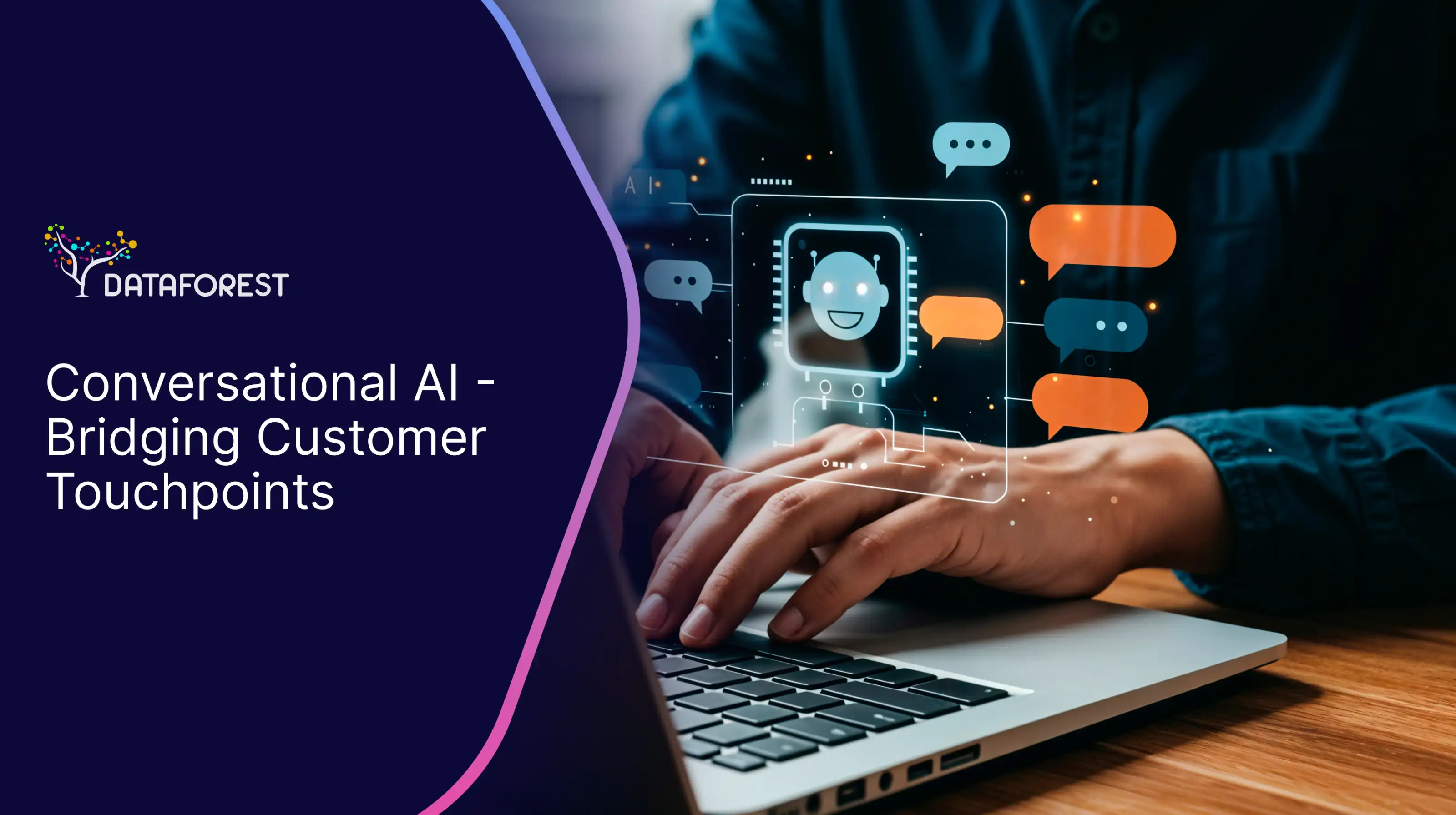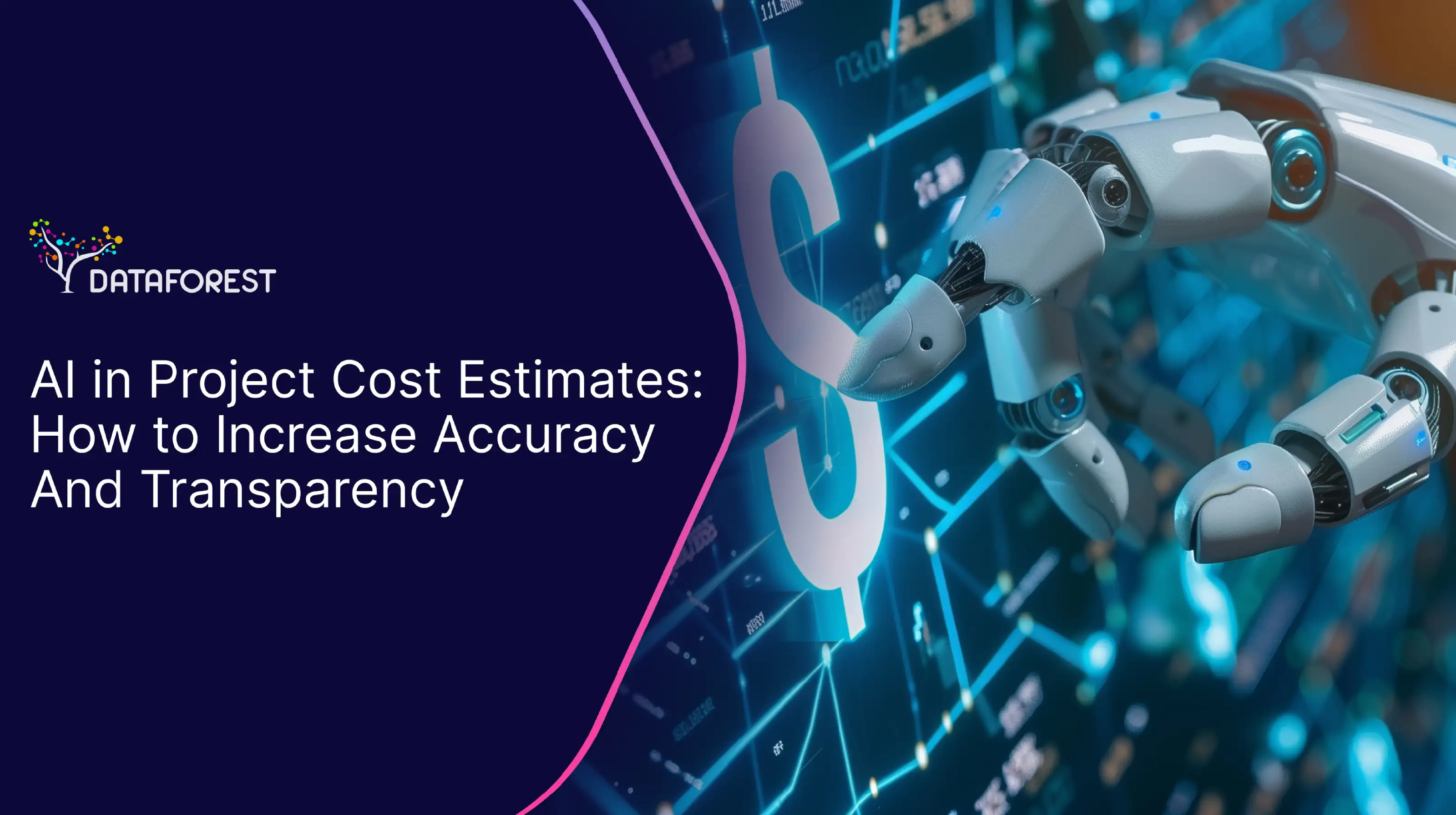The ground is shifting under the telecommunications sector. The old empires, built for decades on the bedrock of connectivity and network reliability, are finding that their foundations are no longer enough to win. While still essential, those assets don't differentiate. We're now in a wholesale transition, moving from a world where telcos simply use technology to one where they must be built on technology—specifically, artificial intelligence. The conversation is no longer about isolated AI projects but about a wholesale transformation into an AI-native telco. This is not a superficial exercise; it is a fundamental re-architecting of the business from its technological core to its customer-facing services. The challenge is immense, but the penalty for inaction—gradual obsolescence—is far greater. For leaders in the AI in telecom sector, the question is not if this transition will happen, but who will lead it.
The Burning Platform: Why AI-Native Transformation is Urgent
The pressure to evolve is coming from all directions, driven by structural shifts in the market, technology, and customer expectations. Standing still is no longer an option for forward-thinking telcos.
Market Forces Driving AI Adoption
Operators are fighting a war on two fronts. On one side are the agile Over-The-Top (OTT) players who have completely rewritten the rules of customer engagement. Their personalized, native-digital approach makes many incumbents look monolithic and slow. On the other front, the value of core connectivity has become commoditized, putting financials in a vise grip of price pressure and eroding margins. As the World Economic Forum has noted, exploding data traffic has not translated into revenue growth, creating an unsustainable model that demands radical cost optimization with AI. The advent of 5G and IoT further complicates this, unleashing a tsunami of network complexity and data that is impossible to manage with human-centric operational models.
Why Incremental AI Isn't Enough
For years, many operators have pursued an incremental approach to AI in telecom, bolting AI tools onto legacy systems. These projects, while delivering localized improvements, fail to generate transformative, enterprise-wide value. They are akin to putting a Formula 1 engine into a horse-drawn carriage; the legacy chassis cannot support the required speed and intelligence. This fragmentation leads to "pilot purgatory," where promising proofs-of-concept never scale due to data silos, vendor lock-in, and a resistant culture. This approach provides a false sense of progress while the business model's foundational cracks widen.
This strategic pivot away from isolated pilots and towards enterprise-wide scaling is now a dominant industry trend, driven by clear financial incentives, as recent executive survey data shows:

AI-Native as a Foundation for Growth
The AI-native model treats AI not as a tool but as the central nervous system of the organization. By building on an AI-first foundation, telcos can move beyond mere efficiency to unlock new vectors of growth. This is where the most impactful AI use cases in telecom emerge, such as creating hyper-personalized customer journeys, developing self-healing telecom networks that preemptively resolve issues, and enabling sophisticated telecom data monetization strategies. For the next decade, a telco's ability to compete—and even survive—hinges on committing to a genuine AI-first telecom strategy, recasting the entire organization with AI at its core. This is the one viable path to creating an organization with the resilience to withstand market shocks and the adaptability to remain profitable.
Decoding the AI-Native Telco: A New Corporate DNA
What truly earns a telco the "AI-native" label? The term has little to do with simply buying new technology. It describes a deep-seated change in the company's operating philosophy, its cultural wiring, and its entire strategic posture.
What Makes a Telco Truly AI-Native
An AI-native telco is an organization where data and intelligence are the primary drivers of every decision and action. Unlike a traditional operator using AI in pockets, the AI-native telco’s processes are automated, predictive, and continuously optimized by AI by default.
Key philosophical shifts include:
- From Reactive to Proactive: Instead of fixing network faults, the system predicts and prevents them. Instead of waiting for a customer complaint, the organization anticipates needs and resolves potential issues in advance.
- From Mass Market to Hyper-Personalization: The "segment of one" becomes a reality. Every offer, communication, and service experience is tailored to the individual customer based on a real-time understanding of their behavior.
- From Siloed Functions to Integrated Intelligence: Data flows seamlessly across network, operations, and customer domains, creating a holistic view that fuels a virtuous cycle of learning.
Technical Characteristics of an AI-Native Stack
Executing this new operating model demands a complete break from the past, architecturally speaking. The hardware-centric monoliths must be dismantled in favor of a fluid, software-defined foundation.
- Cloud-Native Infrastructure: Every component of the technology stack must operate on cloud-native principles. This means engineering for elastic scalability through microservices and container orchestration. This requires a strategic move towards Telco Network Virtualization, transforming rigid hardware into a programmable, software-defined fabric.
- Unified Data Mesh/Fabric: The challenge of fragmented and unstructured data is met with a data mesh that provides governed, secure access to high-quality data across the enterprise. Effective Data Integration & Management is the bedrock.
- Industrialized MLOps: A mature MLOps (Machine Learning Operations) pipeline automates the entire AI model lifecycle, allowing for rapid iteration and scaling AI-native infrastructure across hundreds of use cases.
- Open APIs and Ecosystem Integration: The AI-native telco exposes its capabilities through open APIs, fostering an ecosystem of partners and developers to build new services on its intelligent network.
Source: McKinsey & Company, "Scaling the AI-native telco". This graphic effectively illustrates the operational shift from a traditional, siloed model to an integrated, AI-driven one.
AI-Native vs Traditional Telco Operating Model
This table starkly contrasts the legacy approach with the agility of the AI-native paradigm, highlighting the depth of the required telecom AI transformation.
The tangible returns of going AI-native
Making the transition to an AI-native model manifests as distinct, scalable advantages across the business. These are not just small-step improvements; they fundamentally rewire how a telco’s core functions operate and perform.
AI-Powered Network Automation
The modern network's complexity demands AI-powered network automation. This goes beyond simple scripting to create systems that can:
- Predict and Prevent Outages: By analyzing real-time telemetry data, predictive network analytics models identify anomalies that precede failures. This shifts operations from a reactive "break-fix" to a proactive "predict-and-prevent" model.
- Optimize Resource Allocation: AI gives the network a brain, allowing it to dynamically shift resources like bandwidth and spectrum in response to live traffic. This intelligent allocation isn't just an efficiency gain; it's the critical enabler for delivering on high-stakes promises like guaranteed 5G network slicing.
- Enable Self-Healing Networks: When faults occur, AI performs root cause analysis in seconds and can automatically trigger corrective actions, creating a truly self-healing telecom network.
The use of Traditional AI in TelCo has laid the groundwork here, optimizing networks based on structured performance data.
Customer Intelligence at Scale
In a commoditized market, the AI-driven customer experience is the ultimate differentiator. AI allows telcos to move from generic service to deeply personalized engagement.
- Hyper-Personalized Offers: By analyzing usage data, AI can predict customer needs and present the right offer at the right time, moving beyond segmentation to true 1-to-1 marketing.
- Intelligent Customer Service: The introduction of AI agents, especially those powered by generative AI, is revolutionizing the contact center. They can handle a vast range of queries with human-like nuance and even proactively address issues. A Real-Time AI Voice Agent that manages complex conversations showcases technology directly applicable to telco support.
- Predictive Churn Reduction: Predictive analytics for telcos can identify at-risk customers with high accuracy, enabling targeted retention offers before a customer decides to leave—one of the most powerful financial levers available.
Monetizing Telecom Data with AI
Telcos possess incredibly valuable datasets. AI is the mechanism that turns this inert data into an actionable, monetizable asset.
- New B2B Revenue Streams: Aggregated and anonymized mobility data can create high-value insights for other industries, such as retail (footfall analysis) or smart cities (traffic planning), creating new revenue beyond connectivity.
- Enhanced Internal Decisions: This same data can inform multi-billion-dollar capital expenditure decisions, from network build-out priorities to retail store placement, yielding enormous returns. As explored in Generative AI in TelCo, AI can also simulate complex "what-if" scenarios for network planning.
Navigating the Gauntlet: Overcoming Common Roadblocks
The path to becoming an AI-native telco is fraught with challenges. Recognizing and proactively addressing these business and cultural obstacles is critical for success.
Legacy Infrastructure and Vendor Lock-In
Decades of investment in proprietary, hardware-based systems have created rigid, monolithic architectures that are the antithesis of AI-native agility. They create data silos and lock telcos into inflexible vendor contracts. Breaking free requires a deliberate strategy of decoupling software from hardware, embracing open standards, and systematically migrating to a flexible, cloud-native infrastructure. This transition demands a robust Cloud Architecture Design Service that understands telecom complexities.
Fragmented and Unstructured Data
Telcos are data-rich but often information-poor. Data is scattered across hundreds of disparate, inconsistent systems. Without a concerted effort to break down these silos, any AI initiative is doomed. This is arguably the most significant technical challenge. Industry playbooks on Data Integration make one thing clear: you cannot proceed without a modern data pipeline and a strict governance framework. This isn't optional. The objective must be to stand up a professional Telco Data Operations function that manages data with the same rigor as any other strategic asset.
The Human Element: Talent and Cultural Hurdles
The technology, in the end, is the easier part of the equation. The real friction in an AI-native transition comes from people—it requires a seismic shift in organizational culture and a new caliber of technical skills.
- The Talent Gap: True AI and data science experts are in high demand. Telcos must compete with tech giants, requiring a strategy of upskilling staff, aggressive recruiting, and partnering with specialized firms like Dataforest.
- Resistance to Change: Automation can be perceived as a threat. Overcoming this requires strong leadership, clear communication, and focusing on how AI augments human capabilities—turning engineers into data scientists and agents into "super-agents." This cultural change is essential to drive adoption.
A Phased Approach to Scaling AI-Native Operations
Attempting a "big bang" transformation is not just unrealistic; it's strategically unsound. The smarter play is a pragmatic, phased rollout designed to build momentum, prove the business case with early wins, and allow the organization to learn its way forward. This strategic patience is supported by leading industry research. For example, McKinsey & Company, a globally recognized authority in business transformation, outlines in its 2025 playbook on scaling the AI-native telco a structured, seven-part framework for achieving enterprise-wide impact through phased implementation and continuous learning.
Phase 1 – Secure Buy-In with High-Impact Wins
Your first move is to deliver concrete results that build credibility with stakeholders. Target a few high-impact AI cases—like churn reduction or OpEx savings—that have clear data paths and measurable outcomes. The objective here isn't perfection; it's to prove the model's value, fast.
Phase 2 – Engineer the Industrial-Grade Foundation
Once you have demonstrated value, the mission pivots to building a robust, scalable backbone for company-wide AI-powered telecom operations. This is the heavy engineering work: making the hard architectural choices and laying down the cloud-native infrastructure, data fabric, and MLOps pipelines. This is where you invest in serious Telco Data Optimization and cloud infrastructure.
Phase 3 – Iterate, Scale, and Optimize
Once the foundation is in place, the organization can enter a virtuous cycle of innovation. With a robust MLOps platform, the time to deploy new AI models can be reduced from months to weeks. The organization can now rapidly scale successful use cases and foster an AI "factory" mindset, where a center of excellence helps identify new opportunities and build reusable components, accelerating the telecom AI transformation.
Pioneers of the AI-Native Frontier
While no telco has completed the journey, several are demonstrating what's possible. Rakuten Mobile is a key example of a greenfield operator building a fully virtualized, AI-centric network from scratch. As AI Magazine notes, Rakuten has embedded AI in telecom industry operations from day one, setting a benchmark for efficiency. Established players like AT&T and Telefonica are also making significant strides, heavily investing in analytics and using AI to optimize everything from energy consumption to customer retention. The lesson is clear: the commitment must come from the top and be treated as a core business strategy.
From AI Adoption to AI-Native Leadership
Achieving leadership in the age of AI requires a shift toward creating a scalable, future-proof platform for continuous innovation.
Why Leading Telcos Think Platform-First
The ultimate goal is to build an "AI platform" or "intelligence engine" that provides the data, tools, and services for business units to easily build their own AI solutions. This approach democratizes AI innovation in telecom, moving it from a centralized team to the edges of the organization where business expertise resides. This platform-first thinking is the key to achieving scale.
Future-Proofing with Scalable AI Infrastructure
The field of AI is evolving at a breakneck pace. An architecture must be flexible enough to incorporate future breakthroughs. This means favoring open, modular, and API-driven architectures over proprietary systems. A commitment to scaling AI-native infrastructure built on open-source and cloud-native principles ensures the telco can continuously integrate new AI capabilities. This is where expertise in DevOps & Cloud Solutions is critical.
Measuring Business Value Beyond Tech KPIs
The success of an AI-native telco must be measured by core business value drivers. Leadership must relentlessly tie AI initiatives to metrics like OpEx reduction, Net Promoter Score (NPS), customer churn, ARPU, and new revenue from data monetization. Focusing on these business outcomes ensures that the massive investment required for this transformation delivers a clear and compelling return.
The Unavoidable AI-Native Future
Make no mistake, this path is difficult. But it is not optional. The combined pressures of market competition and evolving customer demands have already made this the required direction of travel. The operators who fully commit to becoming a genuine ai native telco will own the next decade of digital services. Those who hesitate, clinging to legacy models, will be relegated to the sidelines, watching nimbler competitors capture the market value.
If your organization is ready to move beyond strategy and start building tangible results, the window of opportunity is now. We should connect to discuss what it takes to engineer your AI-native future.
Frequently Asked Questions (FAQ)
How is an AI-native telco different from a telco that just uses AI tools?
An AI-native telco is fundamentally architected around AI. Its core operations, customer interactions, and business decisions are automated and optimized by AI by default. A telco that merely uses AI applies it in isolated pockets to existing legacy processes, leading to incremental improvements but not transformative change. The key difference is moving from "doing AI" to "being AI."
What technical infrastructure is required to scale AI in telecom operations?
Scaling AI requires a modern technology stack comprising three key layers: a cloud-native infrastructure (using microservices and Kubernetes for flexibility), a unified data fabric or mesh to break down data silos, and an industrialized MLOps pipeline to automate the development, deployment, and management of hundreds of AI models efficiently.
What are the biggest risks and pitfalls to avoid when scaling AI projects in telecom?
The biggest pitfalls are:
- "Pilot Purgatory": Getting stuck in endless proof-of-concept projects that never scale due to a lack of foundational infrastructure.
- Ignoring Data Quality: Building sophisticated models on top of fragmented, unreliable data, which leads to poor results ("garbage in, garbage out").
- Neglecting the Culture: Underestimating the need for cultural change, upskilling, and executive leadership to drive adoption and overcome internal resistance.
- Vendor Lock-In: Relying on proprietary, black-box AI solutions that limit flexibility and future innovation.
Can we start with pilot projects without major infrastructure changes?
Yes, it's not only possible but recommended to start with high-impact pilot projects to demonstrate value and build momentum. However, this should be done with a clear understanding that to scale those successes across the enterprise, foundational investments in data integration and a modern AI platform will be necessary. The initial pilots should inform the design of the future-state architecture.
Who are some top AI-native telcos, and what can we learn from them?
Rakuten Mobile is a leading example of a company built from scratch on AI-native principles, showcasing the power of a fully virtualized, cloud-based network. We can learn from them the importance of a "clean sheet" architectural design and embedding automation in every process. Incumbents like Telefonica and AT&T also offer lessons in transforming a legacy organization, highlighting the importance of executive sponsorship, building a centralized data analytics capability, and focusing on high-value use cases like energy optimization and customer churn.
What is the real business impact of AI in the telecom sector?
The impact is threefold:
- Cost Optimization: Dramatically lowering OpEx through AI-powered network automation, predictive maintenance, and efficient customer service.
- Revenue Growth: Increasing ARPU and customer lifetime value through AI-driven customer experience personalization and churn reduction.
- New Monetization: Creating entirely new B2B revenue streams through telecom data monetization.
How does Generative AI (Gen AI) fit into the AI-native telco strategy?
Gen AI is a powerful accelerator for the AI-native journey. It significantly enhances customer-facing interactions through highly advanced chatbots and agent-assist tools. In network operations, it can be used to generate code for automation, summarize complex technical reports, and simulate network scenarios, boosting the productivity of engineers and accelerating the move toward self-healing telecom networks. It acts as a powerful layer on top of the foundational AI capabilities.





.svg)
.webp)















